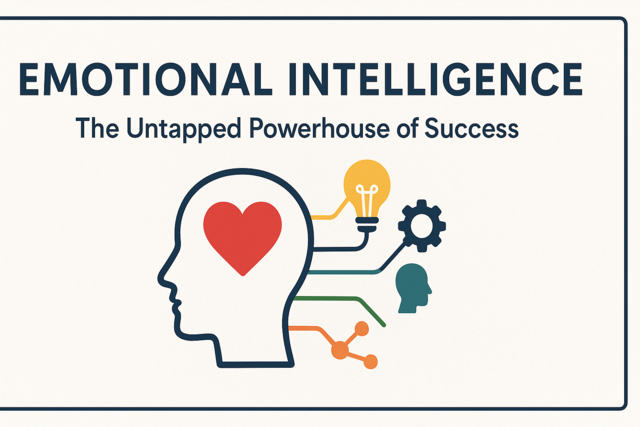In order to improve our cross-cultural communication, we need to be more flexible in our communications. There's more to this, however. We also need to find a way to reduce the bias that clouds our appropriate intercultural interpretations and communications. This article focuses on developing a greater understanding of biases we tend to hold against outgroups to lay a foundation for improving our own intercultural communication.
Tendencies of human perception
Culture shapes the way we see the world, creating for us a set of lenses through which we view the world we live in. Within those lenses, we hold cognitive (thought) and affective (mental) filters that help us evaluate the behaviors of strangers. These lenses allow us to see and interpret the world around us. However, they can also limit and distort our vision, making it difficult for us to accurately see what's before us.
The process of perception involves quickly selecting cues from our environment, organizing them into a coherent pattern and labeling that pattern, and interpreting that pattern. The interpretation is done to comply with our knowledge and expectation. These three steps are reduced to selective attention, selective organization, and selective interpretation. Our cultural conditioning profoundly influences each of these steps.
In selective attention, we quickly pick up cues from our environment to be interpreted. When that environment is unfamiliar, we tend to pay closer attention to salient cues that match our own, (e.g. same age group), cues distinctive from the group (e.g. different skin color), and cues that serve our expectations or goals for the interaction (e.g. handshake greeting ritual). In a world with too much input to process individually, people are drawn to a distinctive feature of another person, and make links with the setting. This can be the beginnings of racist-type treatment.
In the second step of perception, the selective organization and labeling, our culture and language give us guidance for organizing aspects of our environment that we consider relevant. Our socialization has taught us to categorize similar things together and label them with a symbol or name. The name you choose for your perceptual organization depends on your identities, values, attitudes, language labels and the context. We also tend to fill in missing information to make sense of a particular situation. If you see an older woman pushing a baby stroller, you may assume she is the child's grandmother. If we're making these guesses within our own cultural community, we may be more or less accurate. But when we fill in these blanks in unfamiliar cultures, we have a greater chance of being completely wrong.
After selective attention and selective organization and labeling, we come to selective interpretation. In this step, we attach meaning to our received data, which includes our expectations. Expectations are essentially what we anticipate and predict in the communication behaviors of others during an interaction, and they act as filters as we perceive others. We each have certain expectations of certain situations, and when someone violates those, we may become surprised and emotionally aroused, and also pay more attention to this person's odd behavior.
Taken together, these three perceptual filters provide major barriers to effective intercultural communication. When we assume that we perceive and interpret the behaviors of other cultural groups in an unbiased manner, we are leading to ineffective communication. Rather than being objective, we are actually highly subjective, selective and biased in our perceptions of others. However, becoming mindful of these tendencies can go a long way toward helping us "catch ourselves" more often and choose flexible communication instead.
Ethnocentrism and stereotypes
Stereotypes are largely constructed by media images. The media shape how we view dissimilar others, with whom we may have little contact in daily life. As a result, "character types" are constructed as stereotypes. For example, African American women are generally depicted as sex objects or asexual mammies. Latinos are often cast as sensual and spirited, criminals, or buffoons. Some are making strides to counter these influences, such as the widely popular Dora the Explorer children's series, that increases appreciation for Spanish language and Latino culture. It is important to be aware of the power of the media in shaping our thinking and attitudes, thus our behaviors.
Prejudice
We develop our attitudes based on our environments. Our role models, schools, peer groups, media, all are deeply influential in helping us define who our ingroup is and who is in the outgroup. Prejudice is the feelings and attitudes toward outgroup members, be they positive or negative. Interculturally, prejudice is basically antagonistic hostility toward a group or toward an individual due to her group membership. It's the result of biased judgments based on little evidence.
Prejudice, a biased mindset, leads to discrimination, a verbal and nonverbal attitude and behavior. Racism is the direct effect of and practice of discrimination. Racism can be spoken or unspoken, and stems from three essential principles. These are feelings of superiority based on racial and/or biological differences; strong ingroup solidarity and accompanying rejection of any outgroup that differs from the ingroup's customs and beliefs; and a tenet that gives those in power special advantage. One factor that drives racist attitudes and behaviors is fear. This fear is grounded in worry that one's cultural or social habits are being threatened, making them want to either attack or run.
Racism can be practiced through racial profiling, which is where individuals of a certain race or races are generally subject to harsher police treatment than their white counterparts. It is also displayed by perpetuating stereotypes through images, which happens when those in socially dominant positions present themselves in a positive light while presenting others in a more negative light. Consistently portraying those of a particular race in helping or supportive roles rather than main roles demanding intellectual fortitude is an example of this. Hate crimes are crimes targeted toward a member of a specific group. They can include any social group, use any means, and occur in any place. Bullying and cyberbullying fall into this category.
Prejudice and discrimination reduction
It does not have to be a difficult chore to reduce our own prejudice or discrimination. There are some steps you can follow. First, start by being honest with yourself. Ask yourself questions about your socialization and what you've learned and gained from it. In this process, pay attention to any biases and ethnocentric perspectives, beliefs, and attitudes. Ask yourself what is causing you to think or act in this way. Second, pay attention to how you evaluate an outgroup member's behavior. Ask yourself whether you're overgeneralizing or being biased in any way. Third, don't forget that your perceptions will be distorted by negative images of outgroup members. Finally, don't let unfairness go by you without speaking out.
Improving our intercultural flexibility
This lesson has discussed our perceptions of others, ethnocentrism, stereotypes, prejudice, and racism. We can learn to reduce our stereotypes, prejudices and racism by becoming more mindful and aware of our thoughts. First, we can approach others who are different with a clean slate. Don't bring your sets of stereotypes with you. Remember that people are individuals, and there is far more of the iceberg beneath the surface than above it. Second, use your brain to think carefully about your own thoughts and the thoughts and behaviors of others. Be open to multiple perspectives. Also, you can continue to learn about those around you. Pay attention to your community and your world. Further, remember that none of us is perfect. Analyze your ethnocentric tendencies honestly and choose to be mindful in evaluating your own biases. Finally, pay attention to any inflexible stereotypes of outgroup members. It's important to realize that you can't not stereotype; just pay attention to your process of evaluating those in your ingroup and outgroups.





























